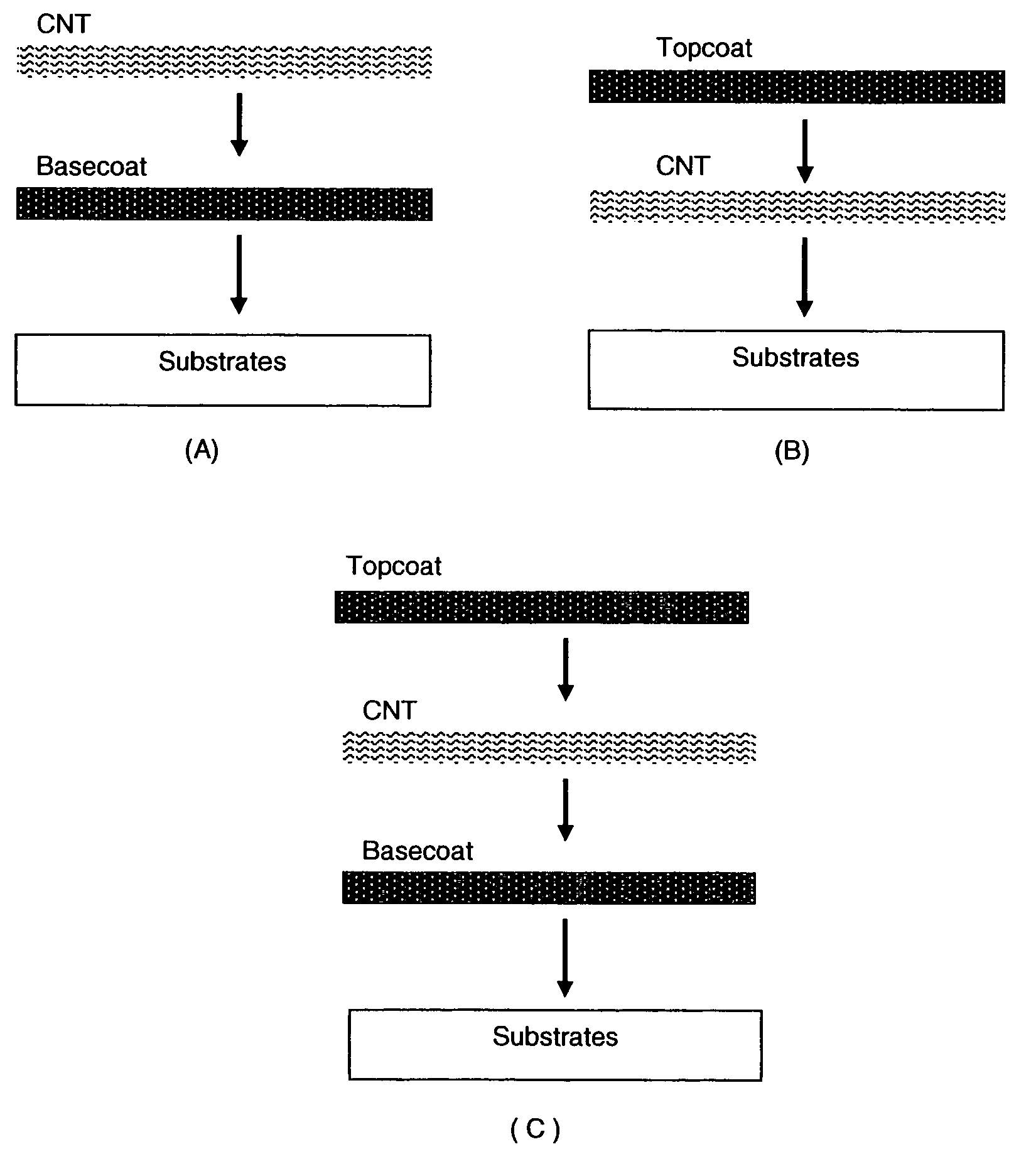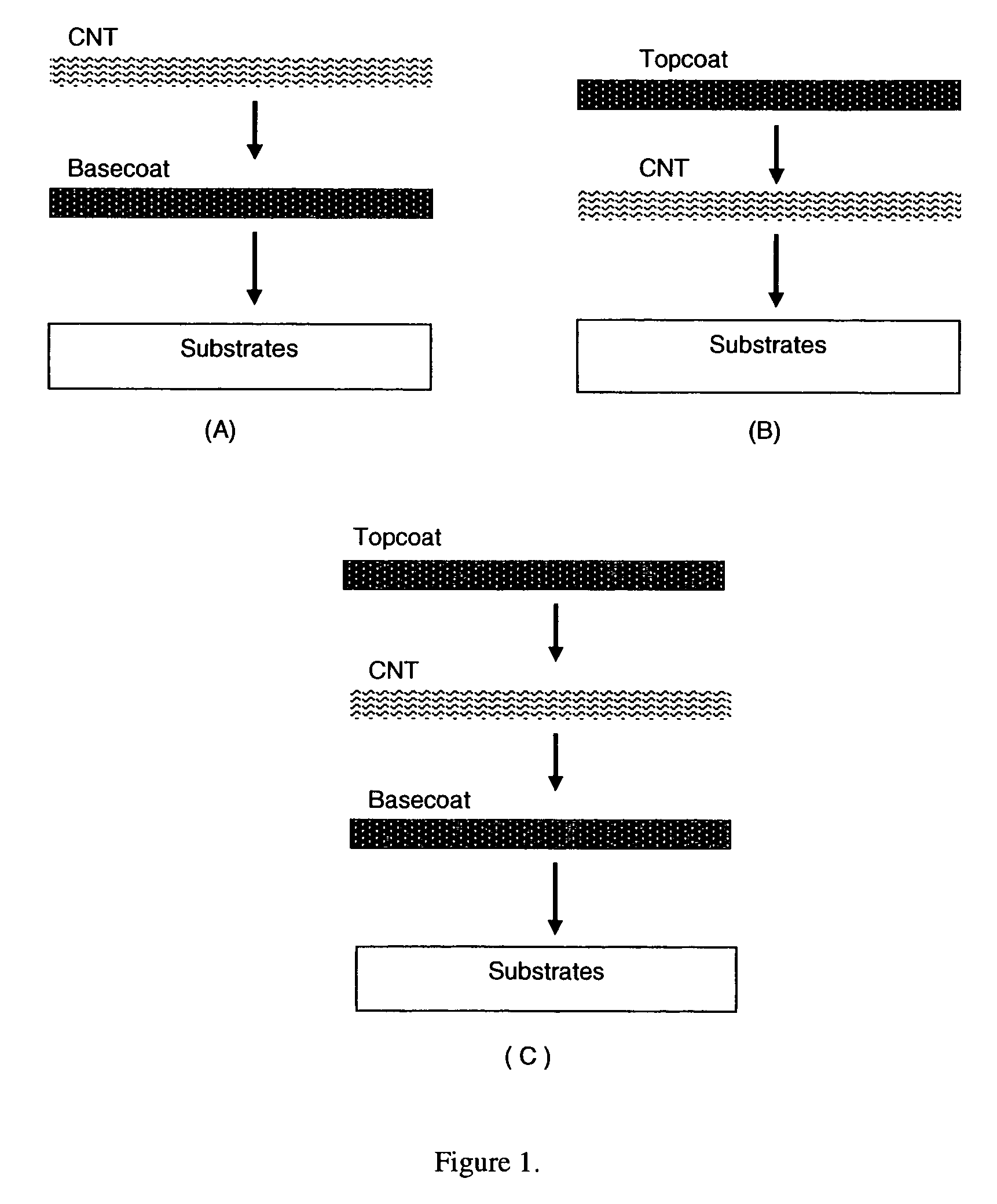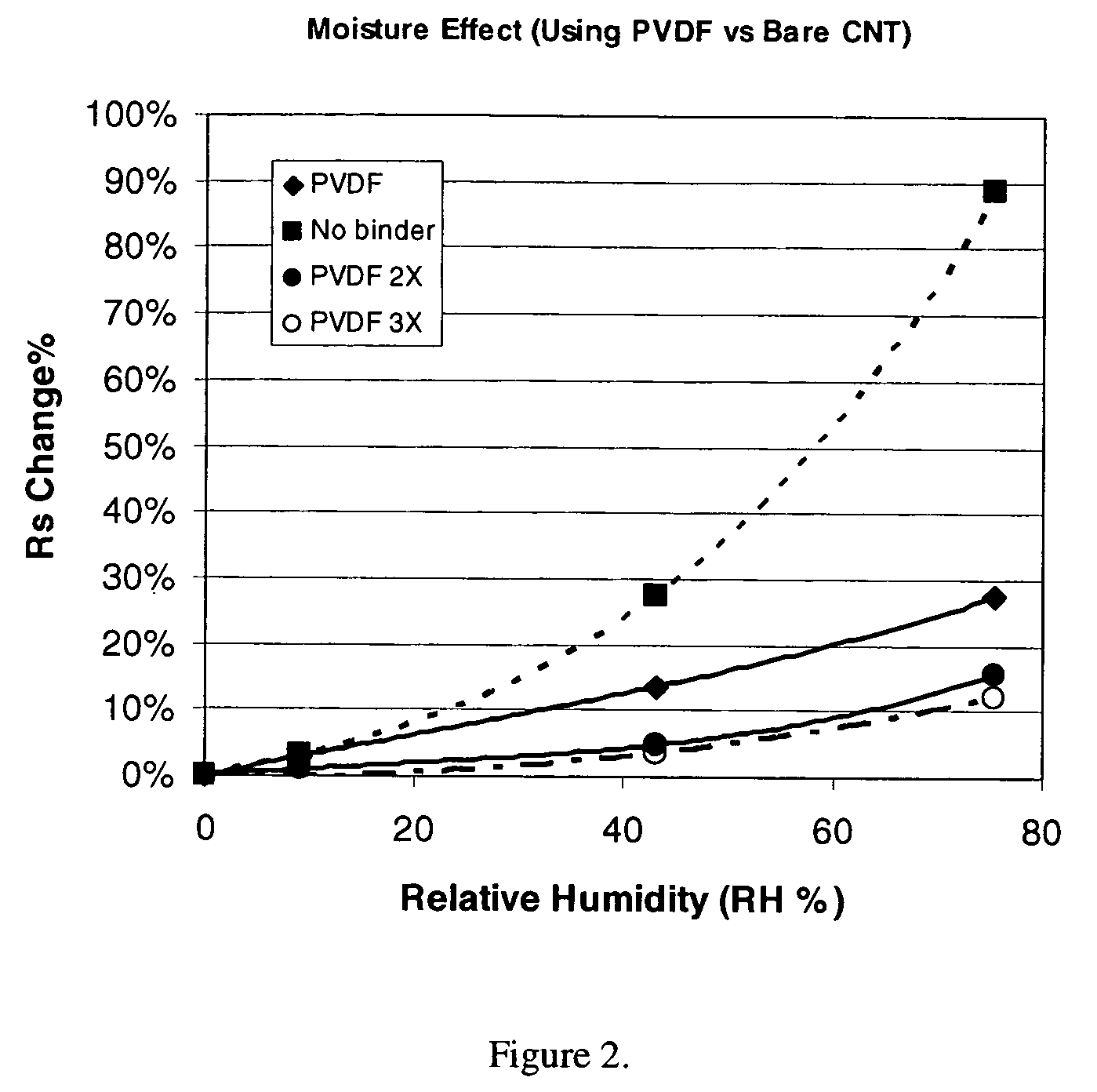Method of forming fluoropolymer binders for carbon nanotube-based transparent conductive coatings
a technology of carbon nanotubes and conductive coatings, applied in the direction of electrical apparatus casings/cabinets/drawers, non-metal conductors, paper/cardboard containers, etc., can solve the problems of poor abrasion resistance and flexibility of ito-based coatings and films, limited supply of expensive indium, and limited polymer conductivity and optical transparency
- Summary
- Abstract
- Description
- Claims
- Application Information
AI Technical Summary
Benefits of technology
Problems solved by technology
Method used
Image
Examples
example 1
#CE1: CNT / glass
[0139]The dispersion of SWNT in 3:1 IPA / water was sprayed onto a cleaned and dried glass slide (1×3″), which had been coated with gold by sputtering at both ends as the electrodes. This sample showed a stable Rs value of 667 O / C= after being in the desiccator for 16-24 hrs. The transmittance of the CNT coating at wavelength of 550 nm is 90-91% % (which can be in the range of 92-95% when a better grade of ink is used). This number is used as the baseline value for further comparison. When this sample was exposed to relative humidity level of 9%, the Rs value initially quickly dropped to 580 Ω / C= within 6 minutes and then quickly increased. After being stabilized, the Rs value of 688 Ω / C= was observed. Compared to the baseline in dry (RH 0%) condition, the Rs value increased by 3.15% at this relative humidity level (RH 9%).
[0140]Similarly, the stable Rs values were 850 Ω / C= and 1600 Ω / C=, corresponding to exposure to the humidity conditions of RH 43% and 75% for 24 hour...
example 2
#CE2: CNT / PET
[0145]The dispersion of SWNT in 3:1 IPA / water was sprayed onto a PET film (Melinex ST 505 from Dupont-Teijin). The sample was then cut into 6×8 cm in size with the both ends pasted with conductive silver paste for further testing. Typical Rs value was in the range of 500-600 Ω / C= while optical transmittance value of this CNT network coating at 550 nm was 89-90% (which was in the range of 91-94% when a better grade of CNT ink was used). Results using similar screening methods are shown in Table 1.
[0146]CNT / substrate with Polymer Binders
example 3
#WE 1: CNT / glass with PVDF as the Binder (Topcoat)
[0147]By using the same ink used for the comparative examples, the sample of CNT / glass were made. It was then dip-coated with 1% of polyvinylidiene fluoride (PVDF) solution dissolved in N,N-dimethyl acetamide followed by drying, and then tested for moisture resistance in the same way as described. The sample was also coated with PVDF multiple times for better coating quality and higher thickness. The sample was tested each time after coating. The results are shown in FIG. 2, FIG. 3 and Table 2.
[0148]Initially the sample showed Rs of 630 Ω / C= at ambient conditions. Stable Rs values of the sample with 1×PVDF coating are 720 and 919 Ω / C=, corresponding to RH 0 and 75%, respectively. The change in Rs from the dry state to RH 75% is 27.5%. After twice (2×) coating, stable Rs values are 720 and 833 Ω / C=, corresponding to RH 0 and 75%, respectively. The change from the dry state to RH 75% is 15.7%. After coating 3×, stable Rs values are 716...
PUM
| Property | Measurement | Unit |
|---|---|---|
| transmittance | aaaaa | aaaaa |
| transmittance | aaaaa | aaaaa |
| transmittance | aaaaa | aaaaa |
Abstract
Description
Claims
Application Information
 Login to View More
Login to View More - R&D
- Intellectual Property
- Life Sciences
- Materials
- Tech Scout
- Unparalleled Data Quality
- Higher Quality Content
- 60% Fewer Hallucinations
Browse by: Latest US Patents, China's latest patents, Technical Efficacy Thesaurus, Application Domain, Technology Topic, Popular Technical Reports.
© 2025 PatSnap. All rights reserved.Legal|Privacy policy|Modern Slavery Act Transparency Statement|Sitemap|About US| Contact US: help@patsnap.com



